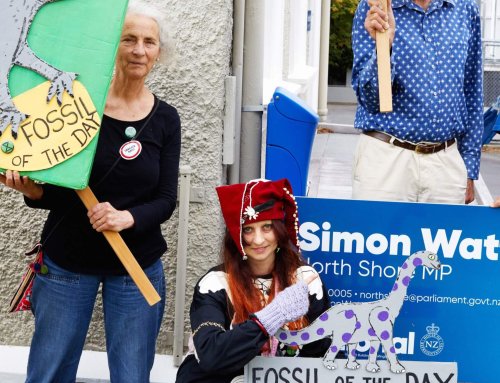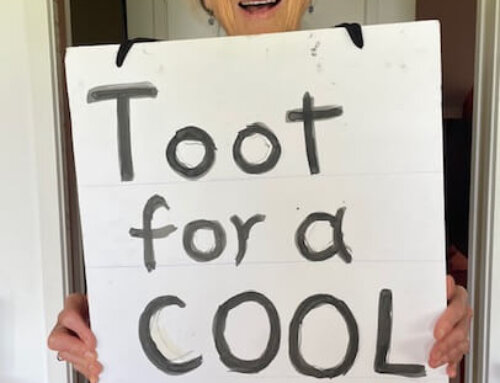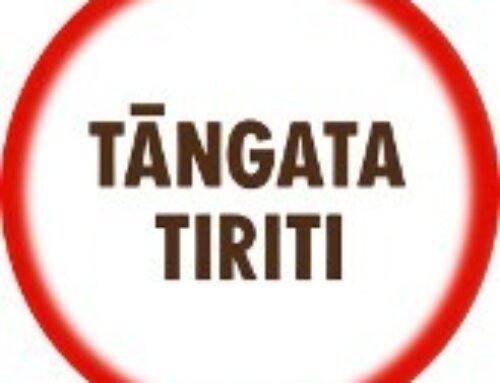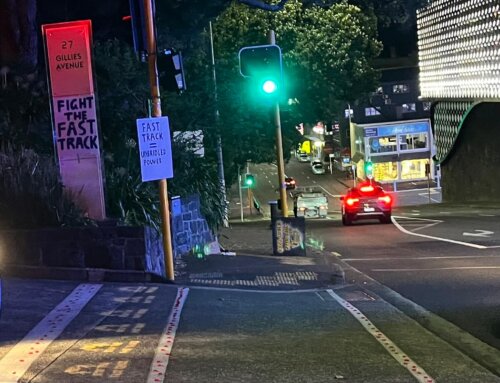Extinction Rebellion Tāmaki Makaurau made a submission to the Auckland Council’s budget consultation. Mairi, Heidi and David did a fantastic job of a detailed document that focussed primarily on transport.
SUBMISSION FROM EXTINCTION REBELLION TĀMAKI MAKAURAU
AUCKLAND COUNCIL ANNUAL BUDGET 2023/2024
March 26, 2023
THIS SUBMISSION RELATES MAINLY TO TRANSPORT
THE SUBMISSION IS ON BEHALF OF EXTINCTION REBELLION TĀMAKI MAKAURAU (XRTM)
XRTM is the Auckland arm of a global climate action movement that aims for urgent and significant action to avoid tipping points in the climate system, biodiversity loss, and the risk of social and ecological collapse. The Auckland group was established in 2018. It was a significant force in persuading Council to declare a climate emergency.
XRTM MAKES THE FOLLOWING INTRODUCTORY POINTS AS PART OF THEIR SUBMISSION
The world is on the brink of catastrophic warming, says the latest UN report.The Auckland Anniversary floods and Cyclone Gabrielle were a small taste of what’s to come.Auckland faces an urgent need to change.This submission is based on the fact that transport-related fossil fuels are the single biggest cause of greenhouse gas (GHG) emissions in Auckland.
As updated to October 2021, New Zealand’s Nationally Determined Contribution (NDC1) under the Paris Agreement is to reduce net GHG emissions to 50% below gross 2005 levels by 2030. Little in the budget willhelp us move towards this goal.In 2022 Council signed the Transport Emissions Reduction Plan (TERP). It is a brilliant plan; it sets out a pathway to reduce transport emissions by 64% (relative to 2016) by 2030 in line with Auckland’s Climate Plan, which was authored by Council itself and has ‘a focus on clear greenhouse gas (GHG) emissions reduction targets’. Again, there is little in the budget to support this goal.
This budget HAS to be transformative. It has to bring on system change.
In this submission, the questions from the Council consultation document are quoted in black; our replies are in a continuation of this blue.
Question 1 – Operating spending reductions
Council’s proposal
Our proposal to save $125 million would also require other reductions, including:
- Maintaining the currently reduced number of public transport services (as of December 2022) for 2023/2024 to save $21 million
- Reducing our funding to Tātaki Auckland Unlimited to save a further $27.5 million, with effects on service delivery and pricing at venues such as Auckland Zoo, Auckland Art Gallery, and stadiums
- Reducing regional services such as community and education programmes, arts and culture programmes, regional events, economic development, and other social services
- Reducing local board funded activities across all boards to save $16 million
- Reducing regional contestable grants to save $3 million
- No longer directly providing early childhood education services to save $1 million.
What is your preference on the proposed operating cost reductions?
None of the options
Our Reasons Why:
XRTM considers that the options are too limited. They do not reflect the spectrum of opportunities available (see below for further explanation).
More specifically and with regard to Transport: –
- XRTM strongly believes the budget needs to reflect the philosophy and provisions of the TERP; otherwise, why go through the exercise of developing the plan?
- XRTM opposes the reduction in bus services because it reduces travel opportunities for Aucklanders.
- Instead, bus routes and frequencies must be increased to make it easier and more convenient for people to switch from cars to buses.
- XRTM opposes the increase of 6.5% in transport fares because it reduces the incentive to use public transport and is particularly unfair for people who have no other transport options.
- Instead, bus fares must be reduced to encourage greater use of public transport.
- XRTM suggests that a shortage of bus drivers could be reduced if working conditions for drivers were improved.
- Parking by private vehicles should be removed from all primary and secondary arterials. This would make arterial roads more efficient and allow easier movement for buses.
- Fees for parking on public space should be increased and the revenue contribute to provision for public and off-road transport.
- Congestion charges need to be introduced for main entrances into the City Centre. The $17m proposed by Auckland Transport (AT) for Midtown Bus Improvements could be paid for by congestion charges.
- XRTM approves of expenditure on busways and cycleways, including the Midtown Bus Improvements, Northwest Bus Improvements, Rosedale and Constellation Bus Stations, the Urban Cycleways programme, On-going Cycling programme, and ‘Pop-up’ cycleways.
- The Eastern Busway is important, but the project should be revised so that it reallocates lanes to the busway and to the cycleway rather than widening the road corridor. XRTM considers that the Eastern Busway does not require the full width of the planned corridor and that a reduction in the width of the corridor would bring cost savings. We suggest that expenditure for corridor widening just to keep / increase the traffic lanes would be better spent if reallocated to cycleway and walkway improvements elsewhere.

Source: https://www.greaterauckland.org.nz/2021/12/20/eastern-busway-opens/ The proposed width of the corridor could be reduced by reallocating lanes to the busway. - XRTM affirms the proposal of $22m for Customer and Business Technology in the view that it will enable public transport connections and planning to be more efficient and user friendly. We note that the Regional Land Transport Plan (RLTP) states at Appendix 1:
A combined programme facilitating technology change to support the design, operation, and use of the public transport system, better customer experience, plus maintaining IT equipment and business applications. This also includes allowance for Integrated Ticketing costs.
- XRTM questions the $13m projected for CRL Day One Level Crossing Removal, given a recent decision to slow the progress of the CRL project.
- XRTM questions the $267m proposed for ‘Other projects and programmes’ and the $55m proposed by AT for ‘other projects and programmes’ (page 35) because they are not sufficiently transparent about why they are needed. XRTM considers that any proposals which cannot be transparently identified in the budget should be removed.
- The Airport to Botany Rapid Transit project is important, but Te Irirangi Drive is very wide already. The project should not use any property acquisition, so route protection is unnecessary. Both the busway and cycleway can be provided in the existing corridor, with traffic lanes reallocated if necessary. We note that the project is likely to take decades to complete, will cause immense disruption to communities in the way, and is likely to be overtaken by global travel changes brought about by climate change. We note that a Notice of Requirement has been lodged with Auckland Council and that submissions close on 11 April 2023. We consider such Notice unnecessary.
- Street parking should be removed from all primary and secondary arterials and collector roads. This would allow safer and easier movement for buses on arterials and safer, more pleasant movement of pedestrians and cyclists on connector roads.
The proposed budget overlooks the revenue gains possible from extending and increasing charges for parking. Increased parking revenue through levies and fees could probably cover the entire shortfall in the budget. We wonder why the stunning extent of this potential revenue is not even mentioned in a budget predicated on filling that ‘hole’. Is this not denying the public key information?
There is no reason why parking in the metropolitan centres, town centres, park’n’rides, and inner residential zones shouldn’t have much higher parking fees. Also, we need parking levies on private parking spaces.
The availability of parking is a prime reason people continue to drive in and around town. If parking is expensive or unavailable, it becomes more attractive to use public transport or cycles. The TERP notes this basic fact at page 35: ‘Parking availability is a key driver of VKT [vehicle kilometres travelled], which we need to reduce over time to reach our goals.’
Vision-led transport planning understands that behaviour change follows infrastructure and rules change. As the TERP at page 35 puts it,
more people will walk, cycle, or take PT if it is easy and safe for them to do so. This is a departure from traditional transport planning, known as predict and provide, which projects that people will continue to drive for most trips. This can undermine planning for sustainable modes by prioritising car trips.
XRTM urges vision-led planning to make carparking pay more instead of a predict-and-provide approach that perpetuates the status quo and privileges the car. Parking clutters streets and makes them more congested for cars as well as more dangerous for cyclists. Car parks also remove road verge space that could be used for amenity planting of trees or stormwater swales, as in the photo from Henderson Valley Rd below. Free or cheap parking on public space is, effectively, a subsidy for car users. For decades drivers have not paid the true cost to the environment and to the public of driving and parking the private car. The parking space subsidy to drivers has been a huge reason for Auckland’s contribution to our climate crisis. Increased parking revenue annually will help pay for the regeneration of our streets. With trees, swales and filter strips, roads and streets can help to make the City ‘spongier’. They can allow rainwater from road surfaces to slow and penetrate the ground. With funding from parking spaces, they can provide for the cost of making safer footpaths and crossings for people with mobility issues, better bus stops, seats and drinking fountains – spaces where people will want to walk or cycle rather than rush past in haste.

Henderson Valley Road, newly constructed roadside swale. Auckland Council construction guide. Stormwater device information series
Parking enforcement revenue should be used to pay for improvements to roads, streets, sidewalks, and footpaths that make things safer, easier and more pleasant for pedestrians, people with prams, people on mobility aids and cyclists. The literal overriding of both cycleways and footpaths by cars parking is visible in the two photos below.


Question 3 – Managing rates and debt
We propose a total rates increase for the average value residential property of around 4.66 per cent or $154 a year (around $3 a week) and to increase our use of debt by up to $75 million in 2023/2024.
Our proposed 4.66 per cent total rates increase would be achieved by:
- An average increase in general rates of 7.0 per cent across all existing properties, including non-residential
- Reducing the Natural Environment Targeted Rate (NETR) and Water Quality Targeted Rate (WQTR) by around two thirds and using the money we have already collected from these targeted rates to continue delivering these work programmes as planned in 2023/2024
- Pausing our change to the split between business and residential rates. Under our current policy, annual increases to general rates for business properties are less than for non-business (residential and farm/lifestyle) properties, so that over time the share of general rates paid by business properties is fairer. Our proposal is to put this change on hold for one year (see page 54 of the consultation document for more details).
What is your preference on our proposal to manage rates and debt?
- Proceed with the proposed increases to rates (4.66 per cent overall for the average value residential property) and debt (up to $75 million of additional debt)
- Set a higher general rates increase
- Make greater use of debt
- Set a lower general rates increase and make greater use of debt
- Other
- I don’t know
Our Preference is: Make less use of debt and set a higher general rates increase
Explanation
A core premise of climate action is that people need to start paying for their own pollution and to fund the climate work that their generation has necessitated. We can’t be miserly about investing in decarbonising our transport system.
We consider that rates should be calculated on the basis of both land and capital value, but that land value should be proportionately higher than capital value. This will encourage a better equity balance between high value suburbs and housing areas compared with lower value areas. The only ethical answer, from a climate justice perspective, is higher rates. Applied to just the wealthiest people who’ve benefited the most from the system, higher rates could easily cover a really good decarbonisation and regeneration programme, without affecting people who are struggling.
Question 7 – What else is important to you?
This submission reflects the views of members of Extinction Rebellion Tamaki Makaurau on Transport aspects of the proposed budget.
We would like the opportunity to speak to our submission.
Dr Mairi Jay
On behalf of Extinction Rebellion Tāmaki Makaurau
March 26, 2023




